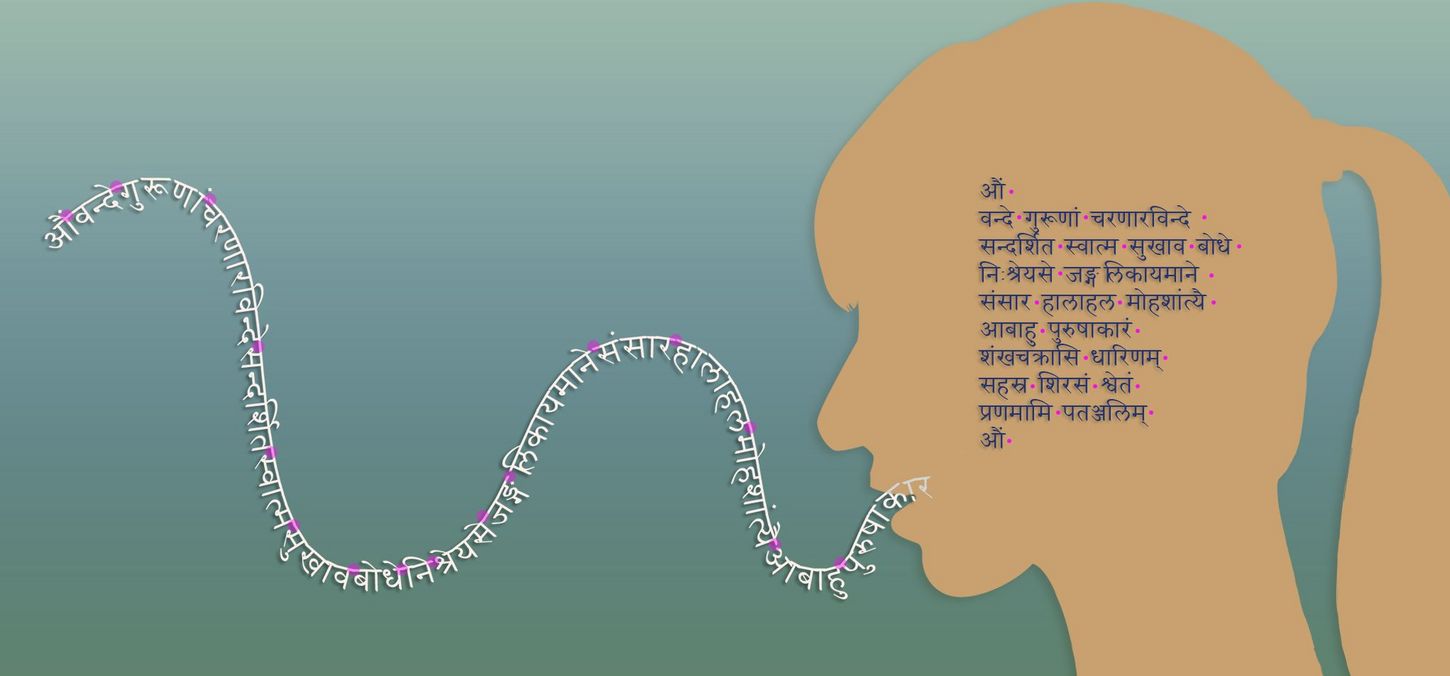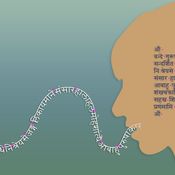Sandhi - Literally: Composition
The term sandhi (संधि, saṁdhi m.) was coined in the Sanskrit grammar by Pannini. Translated literally, it means "composition". The Sandhi rules describe phonological changes that appear when two words meet. These changes facilitate pronunciation and make it more melodic since elements following each other are assimilated. This is the prerequisite for the characteristic melody of the Sanskrit language which makes it possible to learn texts by heart by chanting them and to pass them on over generations.
Please note:
Many modern languages, in particular dialects, show the same phenomenon:
- English: "a apple" becomes "an apple"
- Rhenish: „Ich habe" becomes "Isch hann“ [dialect version of "I have"]
- Rhenish: „Ich aber nicht.“ becomes "Ijj_ävver nit." [dialect version of "But not me."]
- Bavarian: "die Mutter" becomes "d' Muetter" [dialect version of "the mother"]
- Norvegian: "Jeg ha schagt " becomes "Jeg har sagt"
Please note:
The following rules are applied after the rule on final sounds. Therefore, they only consider vowels as well as ḥ, k, ṅ, ñ, ṇ, n, m, ṭ, t, p as final sounds.
These Sandhi rules apply to:
- the meeting of two words
- the parts of compounds
- root words when suffixes, grammar endings or prefixes are added
Compound and separate spelling of words in Devanagari and phonetic script
Originially, all Sanskrit words were written together in Devanāgarī Script. This corresponds to the mostly oral or chanted tradition, in which words melt into each other in a melodic singsong. It was only in the 19th century that a separate spelling of words started to become predominant in both Devanāgarī Script and in the European scripts derived from it.


